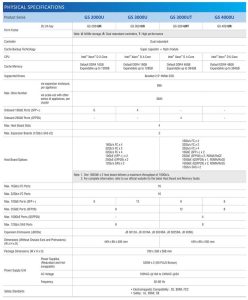Infortrend EonStor GS 3024UT and 4024U All-Flash Unified Storage Solutions for HPC
Featuring 100GbE RDMA, and PCIe Gen4, up to 1.1 million IO/s, and with RDMA to offer up to 24GB/s read and 12GB/s write
This is a Press Release edited by StorageNewsletter.com on November 25, 2022 at 2:02 pmInfortrend Technology, Inc. has released EonStor GS 3024UT and 4024U all-flash unified storage solutions featuring 100GbE RDMA, and PCIe Gen4 that can maximize HPC efficiency while reducing TCO.
With HPC making its way into SMEs, it has been generating complex data and placing higher demands for storage solutions. With a common industry write speed of 7GB/s, some customers are now demanding 12GB/s. An HPC’s mixture of random and sequential data I/O requires the storage solution to facilitate high IO/s and throughput to cope with its parallel file system workloads. In addition, the RDMA technology has become a prerequisite for some of the HPC file systems (StorNext, GPFS, BeeGFS, Lustre, etc.) as it allows for data to be exchanged between networked systems without utilizing the CPU and hence, allowing for more free hardware resources.
Design to meet the demand of HPC storage needs, EonStor GS U.2 all-flash models (GS 3024UT and GS 4024U) deliver up to 1.1 million IO/s and support 100GbE with RDMA technology to offer up to 24GB/s read and 12GB/s write throughput. They can also provide block-level storage for HPC applications while offering file-level storage for enterprise file sharing needs to reduce the cost of maintenance and management.
To coincide with modern server infrastructures on 100GbE protocol, GS U.2 100GbE all-flash series offers performances that can minimize client/ server I/O performance discrepancies in sophisticated HPC applications. The systems provide similar performance to 4x32G FC with a single 100GbE. With the need to purchase less hardware and consume less power, it also reduces TCO.
“Designed to help maximize HPC efficiency, GS U.2 all-flash 100GbE solutions are cost-effect, support highly complex and data-intensive workloads generated by HPC applications with low latency and high throughput bandwidths,” said Frank Lee, senior director, product planning.
Click to enlarge


















 Subscribe to our free daily newsletter
Subscribe to our free daily newsletter


